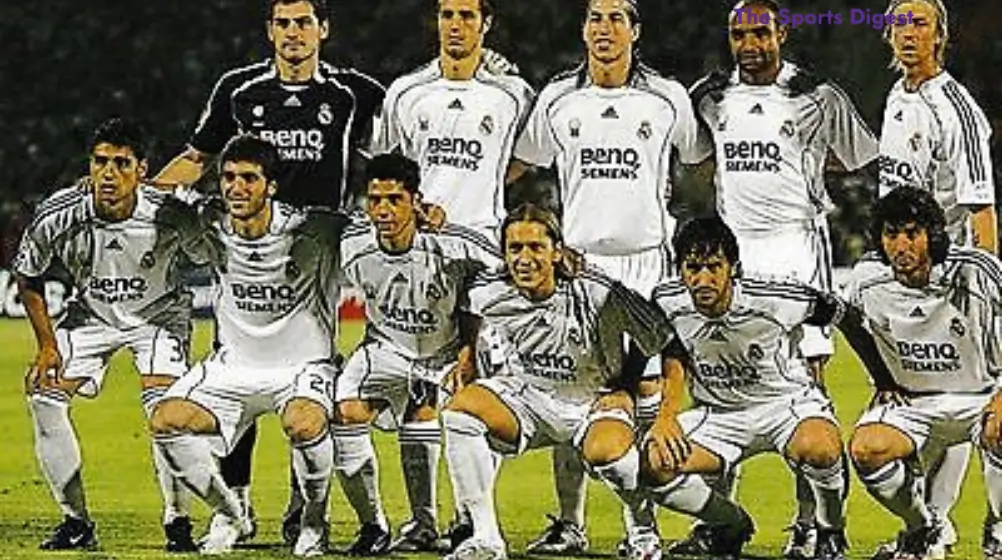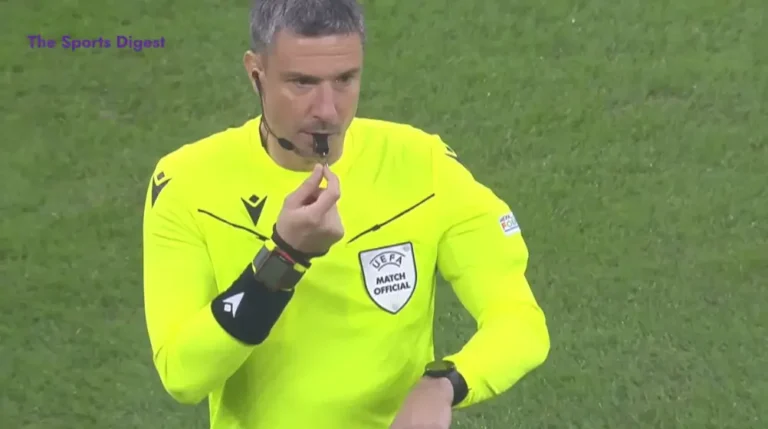2006-2007 Season Real Madrid’s Additions
2006-2007 season a turning point for Real Madrid? After three years without a La Liga title, Real Madrid’s transfers for the 2006/2007 season aimed to rebuild the squad and restore dominance. With the arrival of world-class talents and tactical reinforcements, the club sought to challenge Barcelona and reclaim the throne of Spanish football.
This article takes a deep dive into Real Madrid’s transfers for the 2006-2007 season, analyzing key signings, their impact, and how they shaped the team’s campaign.
Table of Contents
2006-2007 Season: Key Transfers & Squad Reinforcements

Fabio Cannavaro (Juventus, Free Transfer)
- Position: Center-Back
- Impact: The 2006 Ballon d’Or winner brought defensive stability to Madrid. His leadership and tactical awareness were crucial in tightening the backline. However, his performances were inconsistent at times, struggling to adapt to the high pace of La Liga.
Ruud van Nistelrooy (Manchester United, €15M)
- Position: Striker
- Impact: A prolific goal-scorer, Van Nistelrooy netted 25 league goals, leading Madrid to La Liga glory. His experience and clinical finishing made him a nightmare for defenders, and he was instrumental in Madrid’s comeback wins.
Mahamadou Diarra (Lyon, €26M)
- Position: Defensive Midfielder
- Impact: Brought physicality and defensive balance, filling the void left by Claude Makélélé’s departure years prior. Diarra became a crucial part of Madrid’s midfield, providing protection to the defense and dictating play.
José Antonio Reyes (Arsenal, Loan)
- Position: Winger
- Impact: Scored crucial goals, including a brace on the final matchday to secure the league title. Though not a permanent signing, Reyes’ contributions in key moments made him a vital part of Madrid’s title charge.
Emerson (Juventus, €16M)
- Position: Central Midfielder
- Impact: Provided experience and depth in midfield under Fabio Capello’s system. However, his age and lack of pace made it difficult for him to fully adapt, and he struggled to make a significant impact.
Marcelo (Fluminense, €6.5M)
- Position: Left-Back
- Impact: Initially a backup but later became one of the greatest full-backs in club history. Marcelo’s arrival was a long-term investment that paid off, as he evolved into a world-class defender with attacking prowess.
Gonzalo Higuaín (River Plate, €12M)
- Position: Forward
- Impact: Young and promising, Higuaín developed into a key player for Madrid in later seasons. Though he didn’t make an immediate impact, his growth over the years cemented his place as one of Madrid’s top strikers.
Fernando Gago (Boca Juniors, €20M)
- Position: Midfielder
- Impact: Brought playmaking ability to midfield but struggled for consistency. Gago showed glimpses of brilliance but lacked the physicality needed to dominate in La Liga.
2006-2007 Season: Tactical Impact of the Transfers
The 2006/2007 Real Madrid squad was built under Fabio Capello’s tactical philosophy:
- Defensive Solidity: Cannavaro and Diarra added much-needed stability, making Madrid harder to break down.
- Clinical Finishing: Van Nistelrooy became the focal point of the attack, ensuring Madrid had a reliable goal-scoring outlet.
- Midfield Reinforcements: Emerson, Gago, and Diarra provided depth, allowing Capello to rotate and maintain consistency.
- Emerging Talent: Marcelo, Higuaín, and Reyes offered long-term potential, adding youth and dynamism to the squad.
Capello’s disciplined approach meant that Madrid, though not always playing the most attractive football, was efficient and effective in securing results.
2006-2007 Season: The Results & Redemption
After a dramatic campaign, Real Madrid won La Liga in 2006/07, edging Barcelona based on head-to-head results. The squad’s new signings played pivotal roles, especially Van Nistelrooy’s goals and Reyes’ decisive performance on the final day.
Despite a shaky start to the season, Madrid went on an incredible run in the second half, winning crucial matches against key rivals. The title race came down to the wire, and Madrid’s resilience was evident in their ability to secure last-minute victories. Capello’s tactics and the influence of the new signings played a huge role in their success.
Lessons from the 2006-2007 Transfers
Successes:
- Van Nistelrooy’s goal-scoring exploits, which made him one of the best strikers in Europe that season.
- Cannavaro’s defensive leadership, though inconsistent, helped Madrid stay solid when it mattered most.
- Diarra’s midfield stability provided the backbone for Capello’s structured playstyle.
- Marcelo’s signing, though initially unnoticed, proved to be a major success in the long run.
Misses:
- Emerson struggled to adapt to the pace and style of La Liga, failing to make a significant impact.
- Gago and Higuaín needed time to develop, with neither making an immediate difference in Madrid’s title-winning campaign.
Conclusion
The Real Madrid transfers for the 2006/2007 season successfully restored the club’s competitive edge. With a mix of world-class talent and young prospects, Madrid reclaimed the La Liga title, setting the stage for future success.
Despite early season struggles, Capello’s leadership and the impact of new signings led Madrid to one of the most dramatic title wins in history. This season laid the foundation for the club’s future successes, proving that smart transfers and tactical discipline can turn fortunes around.
What do you think? Which signing had the biggest impact? Leave your thoughts in the comments below!
Have you ever read an article like this?
There are no reviews yet. Be the first one to write one.






